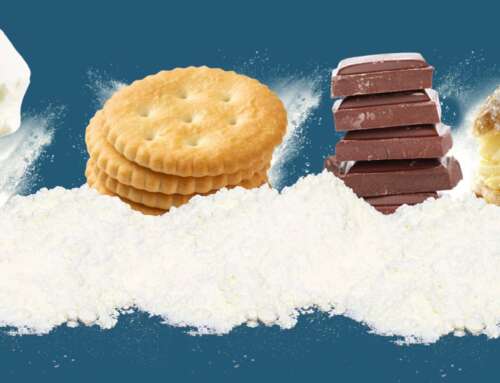Labneh is a soft cheese that is light, healthy, and flavourful. This fresh and tasty dairy product has been enjoyed as a snack or as part of a main meal for hundreds of years.
People across the globe are falling in love with the delicious taste and unique texture of labneh. If you’ve never had the experience of eating labneh, this article will explain why you should consider trying this delicious Levantine cheese.

What is Labneh Cheese and How is it Made?
Labneh is a soft, easily spreadable cheese that is traditionally made from cow’s milk but can be made using sheep’s, goat’s or even camel’s milk. To make labneh in the traditional way, first choose a good quality, robust full-fat yoghurt or kefir. The whey is removed from the yoghurt or kefir by straining it through cheesecloth. In some recipes, milk powder, salt or butter fat is added before the straining begins. The process of making labneh is a waiting game as it needs to strain for at least 24 hours or longer. The consistency and texture of the labneh will be determined by how long the straining process is. The longer the labneh strains, the thicker and firmer it will become.
There is also an industrial process that is now widely used to produce labneh. With this method, the product is made from cow’s milk using mechanical separators, ultrafiltration methods and centrifugation machinery. Stabilizers such as gums, pectin, or other food additives are used. This process is quite similar to the method used in making halloumi. The end result is often referred to as stabilized labneh or Turkish labneh. This labneh has a much longer shelf life than labneh made in the traditional way.
What is the Difference Between Labneh and Yoghurt?
Many people who are new to this creamy, soft cheese wonder if labneh is the same as yoghurt. Although it derives from yoghurt and retains the salty tangy taste of yoghurt, labneh is technically classified as a cheese.
Where Does Labneh Originate From?
Labneh is usually associated with Middle Eastern countries like Syria, Egypt, Lebanon, Jordan, Iran, Iraq and Israel.
While the precise origins of labneh are lost in time, many scholars believe that the practice of making labneh began in Egypt and was spread throughout the Middle East by ancient Hebrew nomads. The historical term for labneh was ‘labna.’ As well as the name labneh, the dish is also now sometimes called lebni, labni, or labani.
Labneh is also commonly eaten in India, Pakistan, Sri Lanka, Bangladesh, Afghanistan, Greece, Cyprus, and even in Iceland and Denmark, although it has different names in these countries.
How Do You Use Labneh Cheese?
Labneh can be used in many different ways, depending on how firm or soft it is. Most commonly, it is eaten cold as a dip that can be enjoyed as an accompaniment to a main meal or a snack. Many people eat labneh for breakfast, prepared with olive oil, herbs, nuts, tomatoes, olives and cucumbers and served with bread for dipping.
However, labneh is much more than just a simple dip. Unlike yoghurt, labneh won’t curdle at high temperatures. So, it can also be used as a thickener in soups or stews or as a filling for pastries or stuffed vegetables.
Firm labneh is traditionally rolled into balls that are coated with herbs and eaten as a snack. This version is believed to have historical origins and was used by Hebrew and Bedouin desert nomads in ancient times.
You can use labneh as more than just a savoury food. Adding sweet ingredients to labneh such as honey or pistachios transforms it into a wonderful dessert dish. Labneh can also be used as the main ingredient in sweet dairy dishes such as cheesecake.
Nutritional Information for Labneh Cheese
Labneh is delicious and versatile and has a range of nutritional benefits. One typical serving of labneh, (around 28 grams) contains high levels of protein and calcium, the exact amounts depend on the type of milk used. Labneh is much lower in fat than other cheeses. Typically, fresh labneh can contain up to 10% fat compared to the usual amounts of 20% to 30% found in other cheeses. Labneh also has much less sodium than other dips or cheeses and is a great way to add calcium to your diet
A serving of labneh will also contain small amounts of other health-supporting vitamins and minerals, including phosphorus, magnesium and potassium. Again, the exact amounts and types will depend on the type of milk used.
The Health Benefits of Labneh Cheese
All of these vitamins, nutrients, and micronutrients mean that a single serving of labneh can deliver a big boost to your health. A serving of labneh has:
- 23% of the recommended daily intake of sodium
- 14% of the recommended daily intake of calcium
- 6% of the recommended daily intake of vitamin A
- 2% of the recommended daily intake of iron
The high protein levels in labneh give us energy and help our bodies to repair cells and tissues and promote muscle growth. All that protein can also aid weight loss as it decreases feelings of hunger and helps to burn calories. Protein also promotes lean body mass, improves metabolism, boosts bone growth and helps to stabilise blood sugar levels. Ajouter aussi qu’il est faible en gras par rapport aux autres fromages
As with other yoghurt products, Labneh is low in lactose, so it’s easy to digest. Labneh also contains high levels of probiotics that enhance gut health, bolster your immune system, and may lower harmful cholesterol levels.
Try some labneh today, your body and your tastebuds will love it!
High added-value proteins such as Promilk® could help improve recipes.


